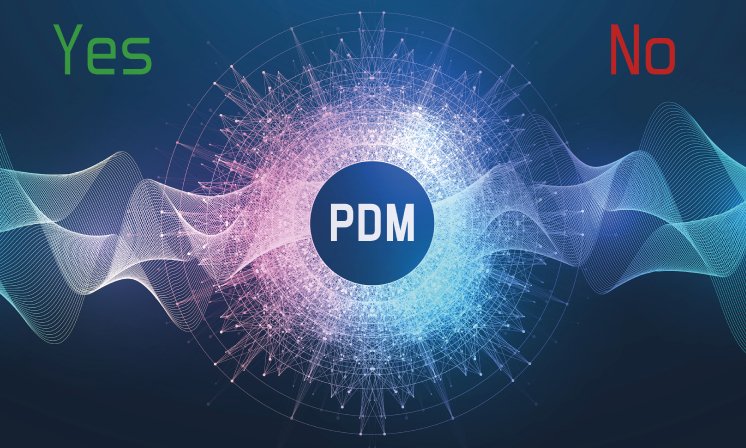The prejudice that a product data management system is not worthwhile is still persistent, especially among design and IT managers as well as in the management of medium-sized mechanical and plant engineering companies, reports Stefan Mitsch, Division Manager PDM at CAD Partner GmbH: "In my discussions with customers, the same myths surrounding PDM solutions always come up: software for product data management would not be considered because the products available on the market are too expensive and complex or the preparation of the inventory data required in advance is too time-consuming. In addition, an ERP or directory system would be sufficient for data management." The PDM expert uses examples to explain to interested parties that a PDM as a "central data hub" can achieve great added value in everyday work with little effort. The functions of PDM Studio, a PDM solution for medium-sized companies developed by CAD Partner GmbH, enables, among other things, structured, uniform product data and the automation of routine activities. This makes it possible to improve collaboration between departments and companies, to efficiently connect employees in home offices even with mediocre Internet speeds, to significantly reduce the error rate and thus to increase productivity, as well as save time and costs. "We can usually refute the five most common reservations directly during a live demonstration," says Stefan Mitsch.
1. Products too complex for automation
Repetitive activities, that are performed manually, cost time and are error-prone, exist in all companies. With a PDM, routine operations such as the automatic filling of properties (e.g. part numbers), the provision of neutral formats (PDF, Step, DXF), the control of print and plotting jobs or a time-controlled provision of data can be automated. This eliminates non-productive time spent on data maintenance and increases employees' productivity.
2. No accurately maintained inventory data
When introducing a PDM system, the property of the inventory data is often decisive. Many systems require pre-optimized product data. In PDM Studio, however, data is taken over exactly as it is, even with broken links, duplicate file names or incomplete properties. The data is checked, revised and supplemented once it has to be accessed anyway, for example due to a project. PDM Studio provides helpful functions for this, such as several filters, a where-used list or batch processing of mass data. In this way, data can be updated step by step and as required. The complete introduction of PDM Studio is therefore possible within a few weeks.
3. Connection of multiple locations and home office employees
Employees must be able to work together on projects and exchange information despite distributed workstations. This is not an obstacle for PDM systems, as long as they have reliable technology and appropriate performance. PDM Studio offers intelligent data synchronization, for example, to keep the network load low in home office environments and to ensure fast and efficient work even with large, complex data volumes. It is also possible to connect it to more than 130 applications and data sources, which facilitates collaboration with consultancy engineers or manufacturing service providers.
4. Information from ERP sufficient
Although an ERP system contains information on the current component, it is usually not possible to trace the revision history. Typically, instead of the CAD data, only its derivation as a PDF is located in the ERP, so that a manual search in the directory structure is again necessary to match the data. PDM Studio saves this step by smart linking and avoids media breaks. In addition, the PDM makes it possible to transfer parts lists automatically or to open an assembly in a specific state, for example, in the originally released version, with all new components or only with new components that have already been released. "A PDM system in the product development process is the counterpart to the ERP in the commercial department," says Stefan Mitsch, underlining the sense of such a solution.
5. Excellent structured directory system existing
Directory systems are not flexible and can become very complex and confusing over the years. Especially employees who do not deal with them regularly, as well as new employees have difficulties working with them. This leads to uncertainty and significantly increases the potential for errors, for example due to redundant and accidentally deleted data. PDM Studio increases traceability by smart linking documents. This means that employees always have up-to-date information at their disposal without tedious searches.
Conclusion
PDM software is a sensible investment in the product development process. Integration with other systems in manufacturing, purchasing, technical documentation or service creates added value for companies that quickly pays off. In addition to the large PDM/PLM systems such as Siemens Teamcenter or SAP ECTR, it is worth looking at solutions that are specifically geared to the requirements of small and medium-sized companies. Short implementation times quickly enable productive use and often lead to the investment already being profitable in the first year.
More information about PDM Studio can be found at www.pdm-studio.tech/en/.

